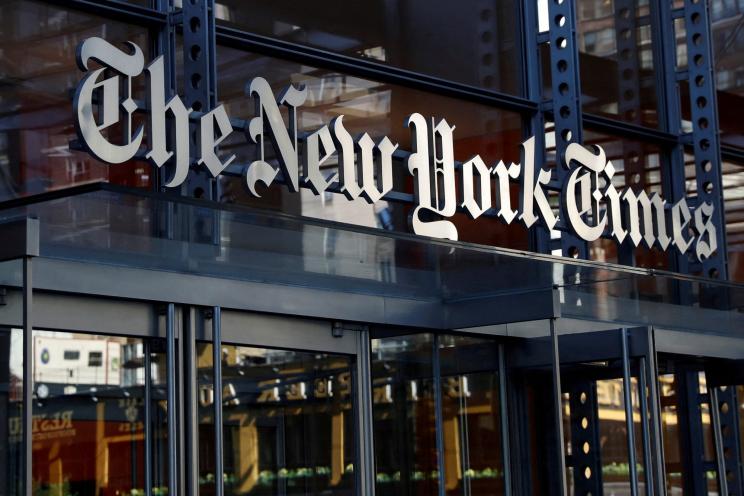There goes The New York Times again, citing a widely discredited measure of physical office occupancy to prop up its “incomplete and uneven” New York City pandemic-recovery narrative.
Tuesday’s article by Emma G. Fitzsimmons and Jeffrey C. Mays, of the Bill de Blasio “tale of two cities” stripe, plausibly asserts not all New Yorkers benefit equally from the economic rebound and many in the “working class” are actually doing worse than before.
More people are poor! Apartments are unaffordable!
But to camouflage its “equity” agenda in a bouquet of “everyone’s hurting to some degree,” the Times says commercial real estate, which drives the local economy, is also in trouble: “Even with more people physically returning to work, the office occupancy rate is still roughly 50 percent of prepandemic levels by one measure.”
The “one measure” to which the article links is of course the discredited Kastle Systems Back to Work Barometer, which tallies weekly office attendance (counted by card swipes) only in buildings that buy Kastle’s security services.
The barometer is mainly a marketing tool for Kastle, a company of which few had heard before it came up with the idea of using its easy-to-read, weekly tallies of office-visit data to raise its profile.
Kastle provides its services mostly in what real-estate insiders call A-minus and B-class buildings — many of them prewar and in secondary neighborhoods.
The barometer covers only one of the city’s 11 largest commercial landlords that own the lion’s share of premier properties — like SL Green, Vornado, Related Companies, Tishman Speyer and Brookfield Property Partners.
Their mostly new, modern buildings are home to financial firms, which have the highest number of employees in the office.
Even “doom loop” economist Stijn Van Nieuwerburgh recently acknowledged to Gothamist, “New York City is recovering to a better extent than most large U.S. cities” partly because the finance industry “has been pretty strict about the return to the office.”
Kastle’s most recent tally of 49.8% Big Apple office occupancy will surprise anyone who works on Park Avenue, Sixth Avenue or at Hudson Yards or Brookfield Place, where many towers are nearly as full as they were in 2019.
More accurate estimates of overall Manhattan office occupancy compared with pre-COVID-19 times run between 60% and 70% and are slowly but steadily rising, as measured both by the Partnership for New York City and the Real Estate Board of New York.
Commercial real estate is indeed in crisis.
But the Times article’s 1,727 words did not include the two words that most affect the market — interest rates, which the Federal Reserve has relentlessly raised since early 2022.
The high cost of money hurts New York more than any other city since so much of its economy, and especially its half-billion square feet of office space, depends on developers’ and landlords’ ability to borrow.
The (so far) relatively few buildings whose owners “gave back the keys” to lenders were hobbled less by rent shortfalls than by crippling increases in the costs of refinancing when loans came due.
How a story that purports to enumerate the city’s economic headwinds could leave out interest rates is a mystery best left to Times editors.
But then, including it might undercut the myth that under-occupied offices are the biggest problem.
And despite the availability of less-pessimistic office data, the Times — whether out of laziness or, more likely, an impulse to cast even more gloom over the skyline than is warranted — can’t shake the Kastle habit.
A recent Peter Coy column on the office market’s future, for example, stated, “The rebound in working from the office has pretty much stalled” — and cited Kastle’s ridiculously lowball findings as proof.
The Times isn’t alone.
Fortune, a magazine that ought to know something about the importance of accurate data, relied entirely on Kastle in a Feb. 10 article.
So did Crain’s last month, but it at least acknowledged at the story’s tail end that other office-occupancy measurements exist.
As long as journalists remain too lazy to look past Kastle’s undercounts, readers will take them as fact — especially those who want to believe the sky is falling despite abundant evidence to the contrary.

